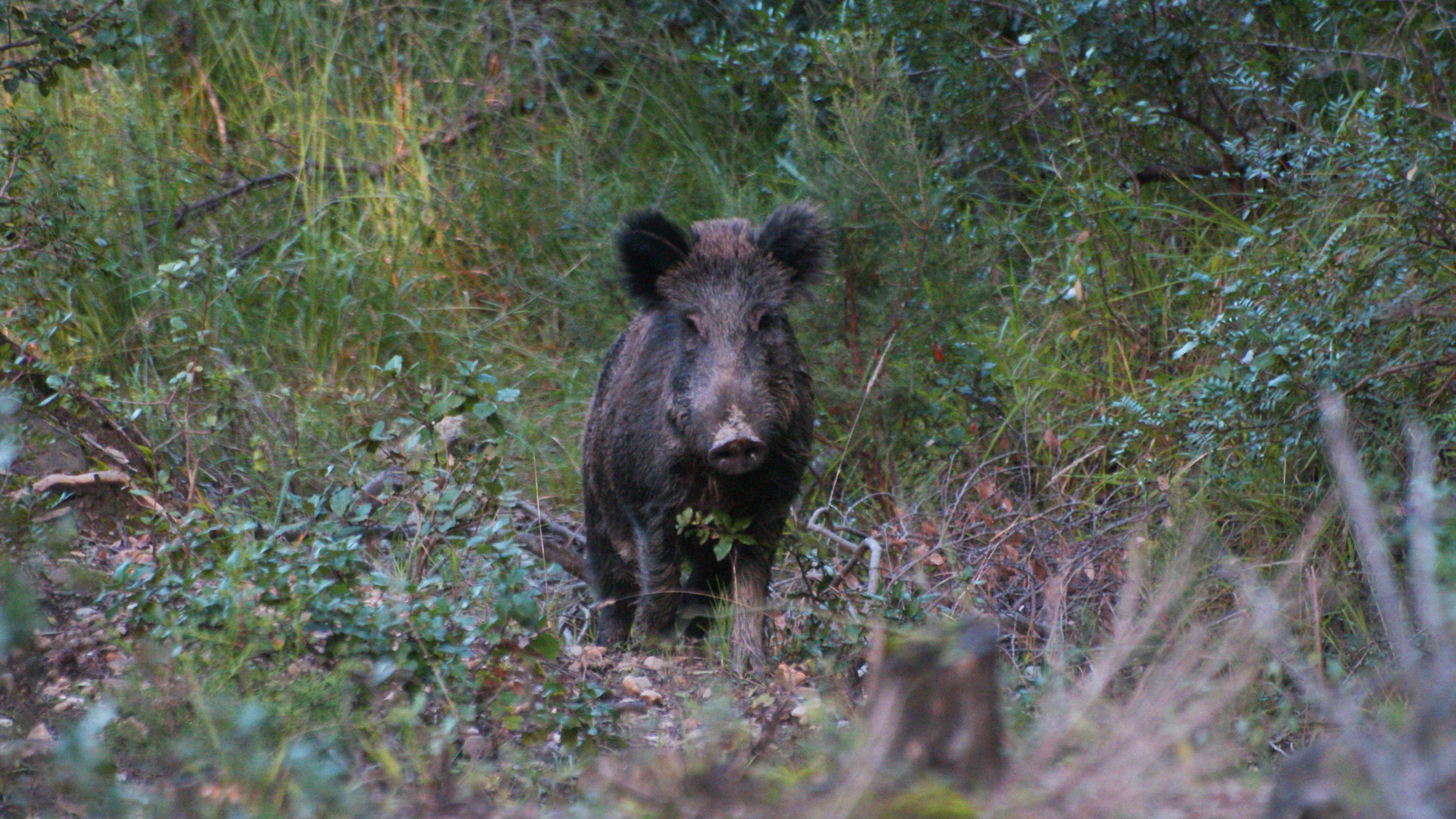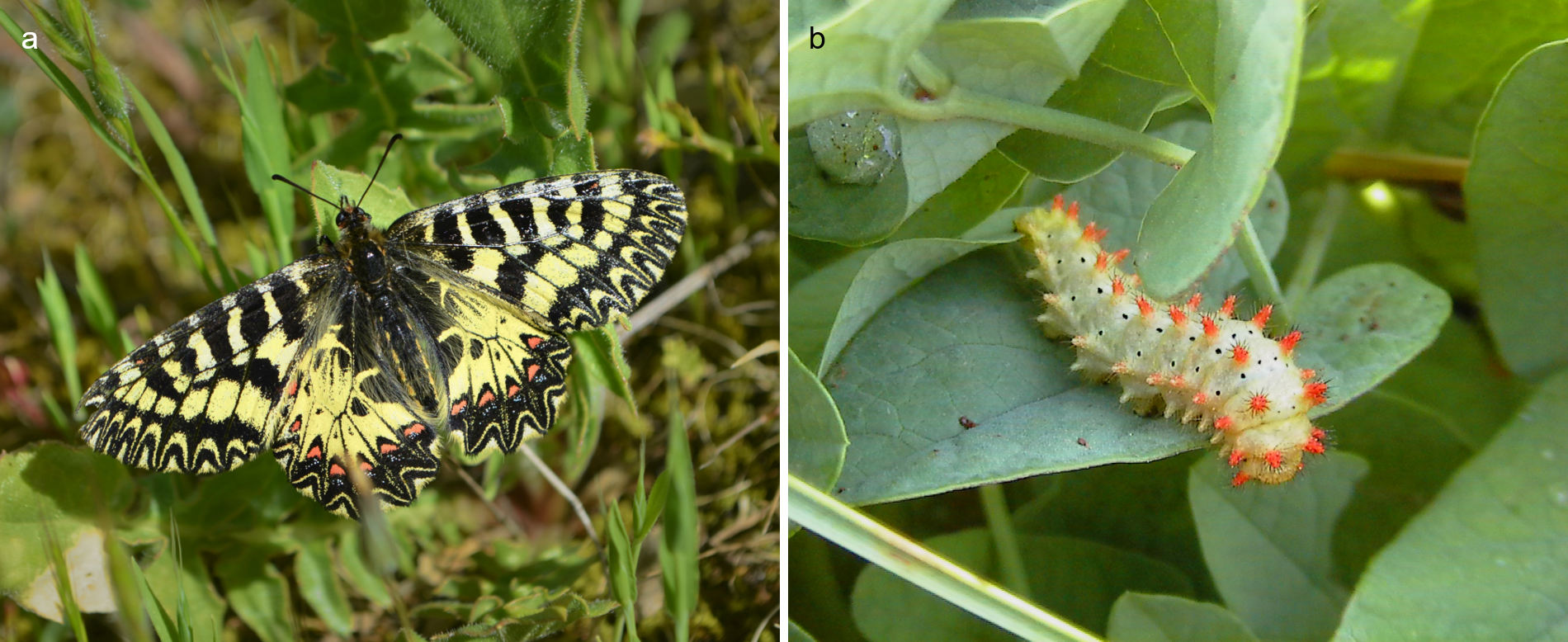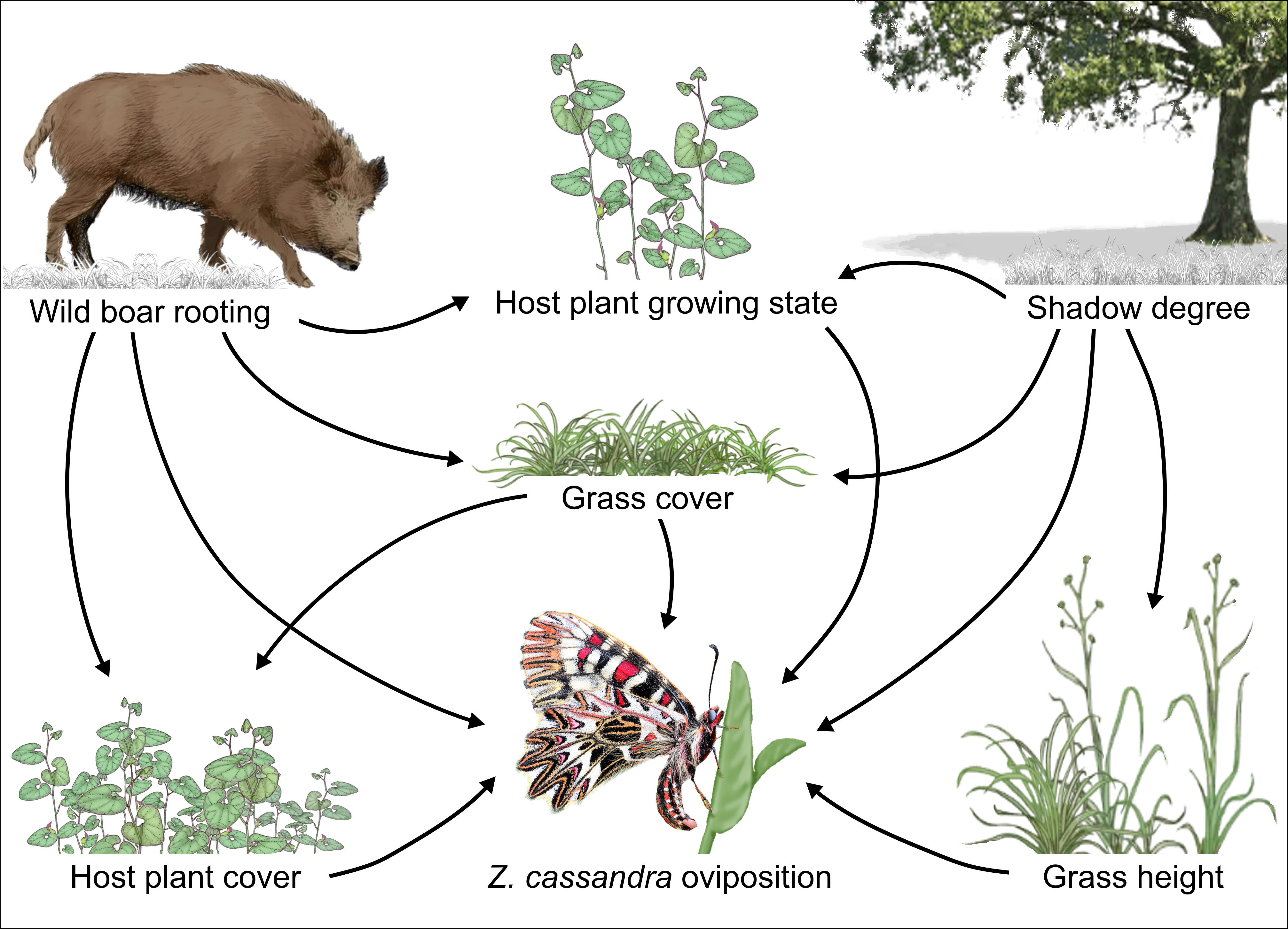Beauty and the Beast: wild boar as a butterfly ally
Published in Ecology & Evolution

Habitat loss and degradation are among the key drivers of biodiversity loss worldwide. As an example, many butterfly species that depend on specific host plants to lay their eggs upon, or that only occur at particular habitats, have sharply declined across Europe. In such context, organisms capable of shaping the environment with their activity – so-called ecosystem engineers – may represent valuable allies to biodiversity conservation as they can create suitable microhabitat to endangered butterflies.
One of the most spread ecosystem engineers in Europe is the wild boar, whose rooting activity may significantly change soil conditions and, in turn, vegetation and microhabitats. Wild boars are increasingly raising concerns among conservationists due to their potentially negative effects on the environment, especially on vegetation, yet very little is known on how rooting affects other animals, such as insects of conservation concern.

In this work, we used the endemic Italian festoon (Zerynthia cassandra) as a case-study to investigate how wild boars may favor – or not – a protected butterfly species with narrow environmental needs. The Italian festoon is in fact a specialized butterfly that only lays eggs on a few herbaceous species from the genus Aristolochia, and due to its low abundance is listed among the species protected by the EU Habitats Directive.

To tackle this, we conducted our work in grassland habitats of southern Italy, where we intensively surveyed sites affected or not affected by wild boar rooting activity for recording the abundance of the host plant (Aristolochia clusii), the occurrence of the butterfly eggs, and the herbaceous plant community.

We highlighted that the host plant is more likely to occur at sites with wild boar activity, where it is also more abundant. The Italian festoon also prefers to lay eggs on host plants surrounded by larger extents of rooting, which also combines with an increased availability of suitable nectar resources.
Our results point at the wild boar as a key ally to the Italian festoon, at least in the study area, and represent a first step in understanding the subtle and delicate connections among ecosystem engineers, plants and invertebrates. Potential further research avenues on this system may focus on identifying the optimum level of wild boar rooting activity – and population density – that fosters positive responses by species and habitats of conservation concern, i.e. providing a tool for a more informed boar management.
Follow the Topic
-
Biodiversity and Conservation

This is an international journal that publishes articles on all aspects of biological diversity, its conservation, and sustainable use.
Related Collections
With Collections, you can get published faster and increase your visibility.
Biodiversity in the XXI century: new paradigms for new challenges
Theme
Human activities are causing a significant decline in biodiversity across both natural and agricultural ecosystems. While the new millennium has brought opportunities for the conservation and sustainable use of biodiversity, it has also introduced new challenges. Rapid advancements in scientific knowledge, including more sophisticated research methods, alongside the impacts of climate change, increasing land use, the spread of invasive species, and the emergence of new pathogens, have dramatically altered the overall landscape. These factors have reshaped how biodiversity is perceived in terms of strategic importance, driving the development of more effective solutions for its sustainable management. This is particularly important for the Mediterranean basin, which represents not only a fundamental area (due to its millennial history, cultures and traditions) but also a complex of natural and agricultural ecosystems that are hotspots of plant, animal and microbial biodiversity still understudied.
Assessing biodiversity is a crucial indicator for monitoring the health of Mediterranean ecosystems, which are increasingly affected by human activity and global warming. The proper functioning of the biosphere relies on diverse ecological networks that are resilient to change, ensuring the survival of animal, plant, and microbial life and the functioning of ecosystems. The extinction of species and the consequent potential functional modification in the ecological network, can have unforeseen consequences, sometimes leading to the collapse of entire ecosystems. The interlinked issues of climate change, biodiversity loss, and ecosystem degradation pose severe risks to the planet’s economic, environmental, and social stability.
The importance of biodiversity research is now widely recognized, even within the agri-food sector. Plants make up more than 80% of the human diet globally, with 30,000 plant species considered edible and 7,000 cultivated for food, yet only about 30 are grown on a large scale. Crops such as rice, wheat, corn, millet, and sorghum account for 60% of the world’s food supply. Among the 30 domesticated animal species, just 14 provide 90% of animal-based food. Additionally, less than 1% of the planet’s microbial biodiversity has been described and studied.
Objectives
This Collection will include papers of the relevant studies that were presented at the 15th National Conference on Biodiversity 2nd International Conference on Mediterranean Biodiversity in Perugia, Italy (June 3-6, 2025) and address these objectives:
1. Share the most recent fundamental and applied scientific knowledge regarding the study, conservation, and sustainable use of animal, plant, insect, and microbial diversity of Mediterranean basin (as defined by biogeography as: the region of lands around the Mediterranean Sea that have mostly a Mediterranean climate, with mild to cool, rainy winters and warm to hot, dry summers, which supports characteristic Mediterranean forests, woodlands, and scrub vegetation) within the academic, scientific, and institutional communities.
2. Address the emerging challenges posed by the increasing impact of human activities and climate change on biodiversity in both natural and agricultural ecosystems.
3. Propose potential solutions and define innovative intervention models focused on both in-situ and ex-situ conservation, as well as sustainable development, incorporating principles of the circular economy and aligning with the EU strategies outlined both in the European Green Deal and in the United Nations Sustainable Development Goals.
This Collection will address United Nations Sustainable Development Goals 1: No Poverty, 2: Zero Hunger, 4: Quality Education, 6: Clean Water & Sanitation, 7: Affordable & Clean Energy, 11: Sustainable Cities, 12: Consumption & Production, 13: Climate Action, 14: Life Below Water, and 15: Life on Land.
Students and Early Career Researchers are encouraged to submit to this collection.
Keep up with the latest Biodiversity and Conservation content by signing up for Journal Alerts today!
Publishing Model: Hybrid
Deadline: Jan 31, 2026






Please sign in or register for FREE
If you are a registered user on Research Communities by Springer Nature, please sign in